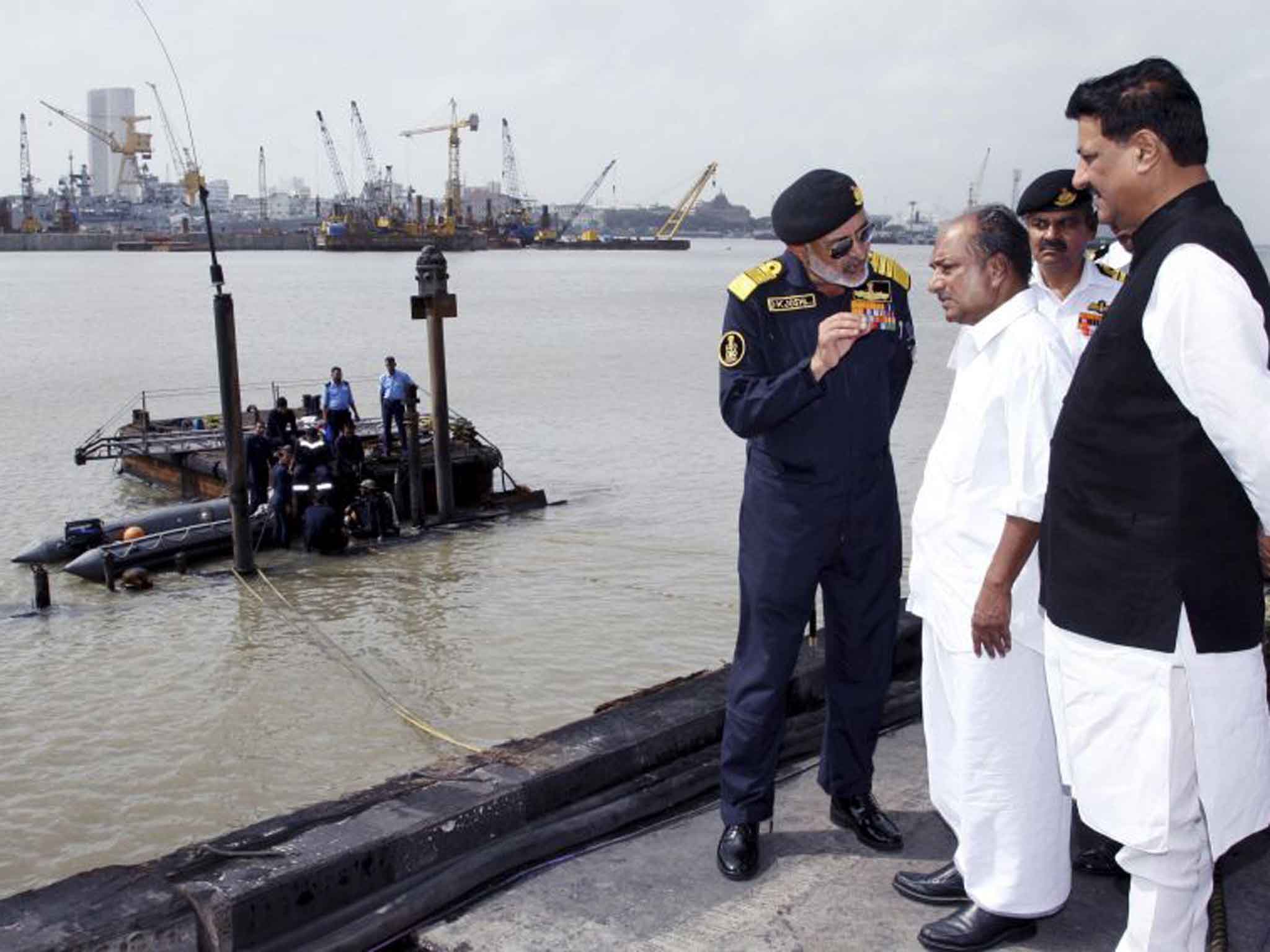Divers search for Indian sailors trapped in submarine
Eighteen sailors are trapped after an explosion in Mumbai naval yard

Hopes of finding any survivors in the wreckage of a blast in the naval dockyards of Mumbai were fading fast tonight as Indian divers struggled through murky waters to reach the sunken submarine where 18 sailors were trapped.
There has been no contact with the men who were on board since the accident on Wednesday morning.
India’s defence ministry said a large amount of seawater had entered the Russian-built INS Sindhurakshak and was creating problems for the divers. Their access was also being hampered by damage caused by the explosions.
Officials said divers had been working in shifts to try to enter the submarine’s series of hatches since it sank early Wednesday, following at least two explosions. But in a statement issued today, the defence ministry said its divers had heard no indication that any of the crew of three officers and 15 sailors had survived. “Trapped personnel have not yet been sighted or recovered,” it said.
In public, senior officers have said they are still hoping for the best. However, one naval official told the Associated Press it was assumed that all of those on board the diesel-powered vessel had died. The official, who was not identified, said the navy believed there was no way anyone could have survived the intensity of the blasts and a subsequent fire.
The sinking of the 16-year-old submarine, which earlier this year returned from a major refit in Russia, is the worst setback for the navy since the sinking of a warship by Pakistan in 1971. An inquiry has been launched to determine the cause of the explosions, which officials believe involved some of its torpedoes firing in the front portion of the vessel.
But it was not the first time that the submarine had suffered such an incident. In February 2010, a sailor on board the INS Sindhurakshak was killed by a fire that broke out in the battery compartment after a leak of hydrogen while it was docked at the Vishakhapatnam naval base.
INS Sindhurakshak is a Kilo class vessel which were built in Soviet and later Russian shipyards for the Indian navy from 1985 to 2000. The navy has 10 of the submarines and four German HDW vessels. Last year, the Indian navy acquired a Nerpa nuclear submarine on a 10-year lease from Russia for about £650m. India also has designed and built its own nuclear submarine, a vessel that could be deployed within two years.
This week the navy launched its first indigenously built aircraft carrier and activated the reactor on the nuclear-propelled submarine. But the carrier and the submarine have been decades in the making and will take several years before they are fully operational.
Some experts argue that instead of building expensive aircraft carriers and trying to project power far beyond its shores, the navy should be focusing on its severely depleted underwater arm to counter the growing reach of the Chinese navy.
India’s push to try to modernise its fleet its part of a broader overhaul of its armed forces that has been going on for some time and has made India the world’s largest importer of arms and weapons systems. In 2012, it accounted for 12 per cent of global arms purchases. Indian military officials say the country is driven by the desire to take on a greater regional role but also by the strategic challenges posed by China in the region.
Join our commenting forum
Join thought-provoking conversations, follow other Independent readers and see their replies
Comments
Bookmark popover
Removed from bookmarks